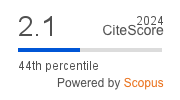Robust GAN-Based CNN Model as Generative AI Application for Deepfake Detection
DOI:
https://doi.org/10.4108/eetiot.5637Keywords:
Deep Learning, Digital Forensics, Generative Adversarial Networks, GAN, Generative AI, CNN model, DeepfakeAbstract
One of the most well-known generative AI models is the Generative Adversarial Network (GAN), which is frequently employed for data generation or augmentation. In this paper a reliable GAN-based CNN deepfake detection method utilizing GAN as an augmentation element is implemented. It aims to give the CNN model a big collection of images so that it can train better with the intrinsic qualities of the images. The major objective of this research is to show how GAN innovations have enhanced and increased the use of generative AI principles, particularly in fake image classification called Deepfakes that poses concerns about misrepresentation and individual privacy. For identifying these fake photos more synthetic images are created using the GAN model that closely resemble the training data. It has been observed that GAN-augmented datasets can improve the robustness and generality of CNN-based detection models, which correctly identify between real and false images by 96.35%.
Downloads
References
I. Goodfellow et al. (2020), “Generative adversarial networks,” Commun. ACM, vol. 63, no. 11, pp. 139–144, doi: 10.1145/3422622.
Islam. A. (2023). A Hist. Gener. AI From gan to GPT-4. MarkTechPost. https//www.marktechpost.com/2023/03/21/a-history-of-generative-ai-from-gan-to-gpt-4/.
Park. S.-W., Ko, J.-S., Huh, J.-H., Kim, J.-C. (2021). Rev. Gener. Advers. Networks Focus. Comput. Vis. its Appl. Electron. 10(10), 1216. https//doi.org/10.3390/electronics10101216.
Jin, L., Tan, F., Jiang, S. (2020). Gener. Advers. Netw. Technol. Appl. Comput. vision. Comput. Intell. Neurosci. 2020, 1–17. https//doi.org/10.1155/2020/1459107.
Lala, S., Shady, M., Belyaeva, A., Liu, M. (2018). Eval. Mode Collapse Gener. Advers. Networks. IEEE.
Lucic, M., Kurach, K., Michalski, M., Bousquet, O., Gelly, S. (2018). Are GANs Creat. Equal. A Large-Scale Study. https//proceedings.neurips.cc/paper/2018/file/e46de7e1bcaaced9a54f1e9d0d2f800d-Paper.pdf.
Groenendijk, R., Karaoglu, S., Gevers, T., Mensink, T. (2020). benefit Advers. Train. monocular depth Estim. Comput. Vis. Image Understanding, 190, 102848. https//doi.org/10.1016/j.cviu.2019.102848.
Verbeek, J. (2019). Deep Gener. Model. INRIA.
Kokate, P., Joshi, A. D., Tamizharasan, P. S. (2020). An Empir. Comp. Gener. Advers. Netw. Meas. Lect. Notes Electr. Eng. 1383–1396. https//doi.org/10.1007/978-981-15-5341-7_105.
Hughes, R. T., Zhu, L., Bednarz, T. (2021). Gener. Advers. networks–enabled human–artificial Intell. Collab. Appl. Creat. Des. Ind. A Syst. Rev. Curr. approaches Trends. Front. Artif.
Ruthotto, L., Haber, E. (2021). An Introd. to Deep Gener. Model. GAMM-Mitteilungen, 44(2). https//doi.org/10.1002/gamm.202100008.
Liu, F., Wang, H., Zhang, J., Fu, Z., Zhou, A., Qi, J., Li, Z. (2022). Evogan An Evol. Comput. Assist. gan. Neurocomputing, 469, 81–90. https//doi.org/10.1016/j.neucom.2021.10.060.
Chen, J., Song, W. (2022). Gan-vae Elev. Gener. ineffective image through Var. autoencoder. 2022 5th Int. Conf. Pattern Recognit. Artif. Intell. (PRAI). https//doi.org/10.1109/prai55851.2022.9904067.
Peters, H., Celis, N. C. (2022). An Empir. Comp. Gener. Capab. GAN vs VAE. KTH R. Inst. Technol.
Su (苏嘉红), J., Yang (杨伟鹏), W. (2023). Unlocking power chatgpt A Framew. Appl. Gener. AI Educ. ECNU Rev. Educ. 209653112311684. https//doi.org/10.1177/20965311231168423.
https://www.kaggle.com/datasets/iamsouravbanerjee/indian-actor-images-dataset.
Prasad Koyyada, S., & Singh, T. P. (2023). An explainable artificial intelligence model for identifying local indicators and detecting lung disease from chest X-ray images. Healthcare Analytics, 100206.
F. Marra, D. Gragnaniello, D. Cozzolino, L. Verdoliva, “Detection GAN-generated fake images over Soc. networks,” Proc. IEEE Conf. Multimed. Inf. Process. Retrieval, 2018, pp. 384–389.
Afchar, D., Nozick, V., Yamagishi, J., Echizen, I. (2018). MesoNet A Compact facial video Forg. Detect. network. Proc. IEEE Conf. Comput. Vis. Pattern Recognit. Work. 2122-2131. https//openaccess.thecvf.com/co.
Zhou, W., Huang, Y., Wang, W., Wang, W., Tan, T. (2020). Learn. to Detect fake face videos wild. Proc. IEEE Conf. Comput. Vis. Pattern Recognition, 5205-5214. https//openaccess.thecvf.com/content_CVPR_2020/papers.
Downloads
Published
Issue
Section
License
Copyright (c) 2024 EAI Endorsed Transactions on Internet of Things

This work is licensed under a Creative Commons Attribution 3.0 Unported License.
This is an open-access article distributed under the terms of the Creative Commons Attribution CC BY 4.0 license, which permits unlimited use, distribution, and reproduction in any medium so long as the original work is properly cited.




